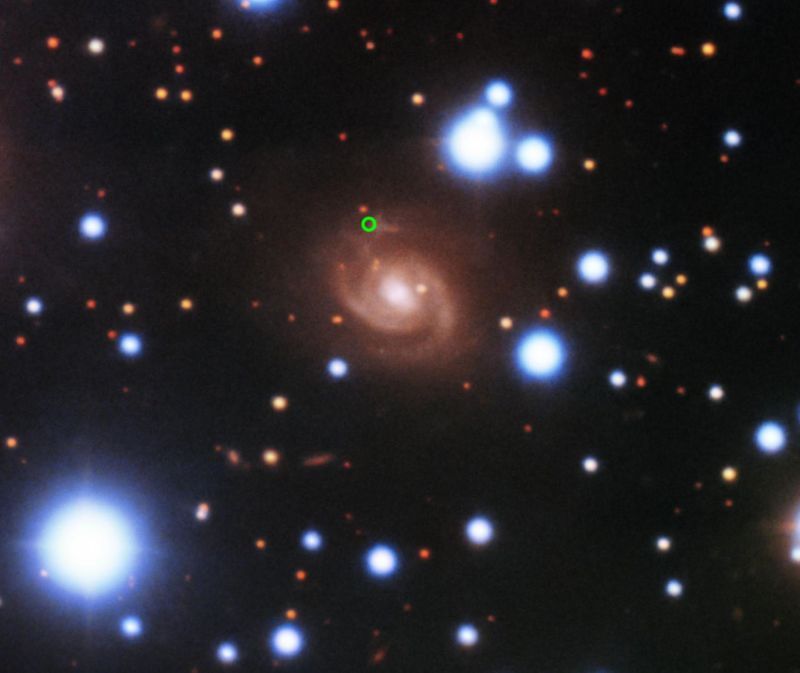Closest-ever fast radio burst makes some ideas on their origin less likely

Enlarge / The source of the fast radio bursts, circled in green. (credit: NSF'S OPTICAL-INFRARED ASTRONOMY RESEARCH LABORATORY/GEMINI OBSERVATORY/AURA)
Over a decade after their discovery, fast radio bursts remain an enigma. Often lasting less than a millisecond, the bursts release an incredible amount of energy in the radio frequencies, then go silent. In many cases, there's no indication of anything else happening near that location again, suggesting a catastrophic event that destroyed whatever produced it. But over time, a handful of repeating burst sites have been identified, allowing the galaxy of at least one source to be identified and a few inferences about its properties to be inferred.
But the identification of repeating sources hasn't cleared up as much of the mystery as we might hope. In fact, it has raised questions about whether repeating and lone events might be from entirely different sources.
On Monday, researchers described the closest repeating fast radio burst yet identified, as well as the identity of its host galaxy. And in analyzing the burst's behaviors, the scientists involved suggest that it favors a few existing ideas but should cause us to rethink a few others.
Read 10 remaining paragraphs | Comments